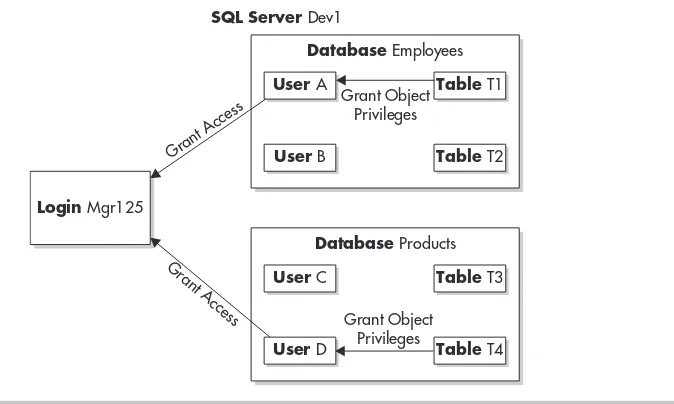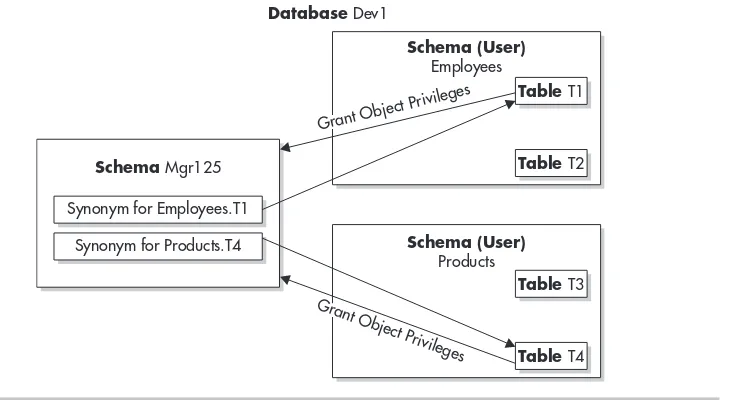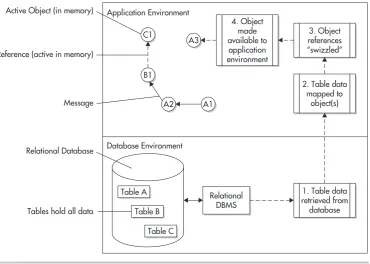in1974.Sincethen,hehasbeencontinuouslyemployedinawidevarietyofinformation technologypositions,includingprogrammer,programmer/analyst,systemsarchitect,project manager,seniordatabaseadministrator,databasegroupmanager,consultant,database designer,datamodeler,anddataarchitect.Inaddition,hehasservedasapart-timeinstructor withtheUniversityofCalifornia,Berkeley,Extensionformorethan20yearsandreceived theHonoredInstructorAwardfortheyear2000.Histeachingworkincludeddevelopingthree coursesforUCExtension,“ConceptsofDatabaseManagementSystems,”“Introductionto RelationalDatabaseManagementSystems,”and“DataModelingandDatabaseDesign.”He alsoearnedhisOracle9iDatabaseAssociatecertificationin2003.Heiscurrentlyemployed asaseniordatamodelerforBlueShieldofCalifornia.Inadditiontocomputersystems,Andy enjoysmusic(guitarandvocals),amateurradio(PacificDivisionViceDirector,American RadioRelayLeague),andsoccer(RefereeInstructor,U.S.Soccer).
Andyhasdesignedandimplementedhundredsofdatabasesforawiderangeof applications,includingmedicalresearch,banking,insurance,apparelmanufacturing, telecommunications,wirelesscommunications,andhumanresources.Heistheauthor ofDatabasesDemystified(McGraw-HillProfessional,2004)andSQLDemystified
(McGraw-HillProfessional,2005),andisco-authorofSQL:ABeginner’sGuide
(McGraw-HillProfessional,2009).HisdatabaseproductexperienceincludesIMS,DB2, SybaseASE,MicrosoftSQLServer,MicrosoftAccess,MySQL,andOracle(versions7, 8,8i,9i,and10g).
Ifyouhaveanycomments,pleasecontactAndyatandy@andyoppel.com.
About the Technical Editor
ABeginner’sGuide
AndrewJ.Oppel
NewYorkChicagoSanFrancisco LisbonLondonMadridMexicoCity MilanNewDelhiSanJuan
MHID: 0-07-160847-8
The material in this eBook also appears in the print version of this title: ISBN: 978-0-07-160846-6, MHID: 0-07-160846-X.
All trademarks are trademarks of their respective owners. Rather than put a trademark symbol after every occurrence of a trademarked name, we use names in an editorial fashion only, and to the benefit of the trademark owner, with no intention of infringement of the trademark. Where such designations appear in this book, they have been printed with initial caps.
McGraw-Hill eBooks are available at special quantity discounts to use as premiums and sales promotions, or for use in cor-porate training programs. To contact a representative please visit the Contact Us page at www.mhprofessional.com.
Information has been obtained by McGraw-Hill from sources believed to be reliable. However, because of the possibility of human or mechanical error by our sources, McGraw-Hill, or others, McGraw-Hill does not guarantee the accuracy, adequacy, or completeness of any information and is not responsible for any errors or omissions or the results obtained from the use of such information.
TERMS OF USE
This is a copyrighted work and The McGraw-Hill Companies, Inc. (“McGraw-Hill”) and its licensors reserve all rights in and to the work. Use of this work is subject to these terms. Except as permitted under the Copyright Act of 1976 and the right to store and retrieve one copy of the work, you may not decompile, disassemble, reverse engineer, reproduce, modify, create derivative works based upon, transmit, distribute, disseminate, sell, publish or sublicense the work or any part of it without McGraw-Hill’s prior consent. You may use the work for your own noncommercial and personal use; any other use of the work is strictly prohibited. Your right to use the work may be terminated if you fail to comply with these terms.
v
ACKNOWLEDGMENTS . . . xi
INTRODUCTION . . . xiii
PARTI DatabaseConcepts 1DatabaseFundamentals . . . 3
PropertiesofaDatabase . . . 4
TheDatabaseManagementSystem . . . 5
LayersofDataAbstraction . . . 6
PhysicalDataIndependence . . . 8
LogicalDataIndependence . . . 10
PrevalentDatabaseModels . . . 10
FlatFiles . . . 10
TheHierarchicalModel . . . 13
TheNetworkModel . . . 15
TheRelationalModel . . . 17
TheObject-OrientedModel . . . 19
TheObject-RelationalModel . . . 21
ABriefHistoryofDatabases . . . 22
WhyFocusonRelational? . . . 24
2ExploringRelationalDatabaseComponents . . . 29
ConceptualDatabaseDesignComponents . . . 30
JoiningTables . . . 143
Denormalization . . . 209
TryThis8-1:MappingaLogicalModeltoaPhysicalDatabaseDesign . . . 274
13IntegratingXMLDocumentsandObjectsintoDatabases . . . 371
PARTIV Appendices AAnswerstoSelfTests . . . 401
Chapter13:IntegratingXMLDocumentsandObjectsintoDatabases . . . 441
BSolutionstotheTryThisExercises . . . 447
TryThis5-1Solution:ProjectDatabaseManagementTasks . . . 448
TryThis6-1Solution:UTLAAcademicTracking . . . 449
TryThis6-2Solution:ComputerBooksCompany . . . 452
TryThis7-1Solution:DrawanERDinInformationEngineering(IE)Format . . . 454
TryThis8-1Solution:MappingaLogicalModeltoaPhysicalDatabaseDesign . . . 455
TryThis10-1Solution:DatabaseObjectPrivileges . . . 455
TryThis11-1Solution:SQLTransactionSupport . . . 456
TryThis12-1Solution:DesignStarSchemaFactandDimensionTables . . . 456
TryThis13-1Solution:UsingSQL/XMLFunctions . . . 457
xi
xiii
T
hirty-fiveyearsago,databaseswerefoundonlyinspecialresearchlaboratories, wherecomputerscientistsstruggledwithwaystomakethemefficientanduseful, publishingtheirfindingsincountlessresearchpapers.Todaydatabasesareaubiquitous partoftheinformationtechnology(IT)industryandbusinessingeneral.Wedirectlyand indirectlyusedatabaseseveryday—bankingtransactions,travelreservations,employment relationships,websitesearches,onlineandofflinepurchases,andmostothertransactions arerecordedinandservedbydatabases.Asisthecasewithmanyfast-growingtechnologies,industrystandardshavelagged behindinthedevelopmentofdatabasetechnology,resultinginmyriadcommercial products,eachfollowingaparticularsoftwarevendor’svision.Moreover,anumber ofdifferentdatabasemodelshaveemerged,withtherelationalmodelbeingthemost prevalent.Databases:ABeginner’sGuideexaminesallofthemajordatabasemodels, includinghierarchical,network,relational,object-oriented,andobject-relational.This bookconcentratesheavilyontherelationalandobject-relationalmodels,however, becausethesearethemainstreamoftheITindustryandwilllikelyremainsointhe foreseeablefuture.
Databases:ABeginner’sGuidefocusesonthetransformationofrequirementsintoa workingdatamodelwithspecialemphasisonaprocesscallednormalization,which hasproventobeaneffectivetechniquefordesigningrelationaldatabases.Infact, normalizationcanbeappliedsuccessfullytootherdatabasemodels.And,inkeeping withthenotionthatyoucannotdesignanautomobileifyouhaveneverdrivenone,the StructuredQueryLanguage(SQL)isintroducedsothatthereadermay“drive”adatabase beforedelvingintothedetailsofdesigningone.
I’vedrawnonmyextensiveexperienceasadatabasedesigner,administrator,and instructortoprovideyouwiththisself-helpguidetothefascinatingandcomplexworld ofdatabasetechnology.ExamplesareincludedusingbothMicrosoftAccessandOracle. Publiclyavailablesampledatabasessuppliedbythesevendors(theMicrosoftAccess NorthwinddatabaseandtheOracleHumanResourcesdatabaseschema)areusedinexample figureswheneverpossiblesothatyoucantrytheexamplesdirectlyonyourowncomputer system.Aselftestisprovidedattheendofeachchaptertohelpreinforceyourlearning.
Who Should Read This Book
Databases:ABeginner’sGuideisrecommendedforanyonetryingtobuildafoundation indatabasedesignandmanagement,whetherforpersonalorprofessionaluse.Thebook isdesignedspecificallyforthosewhoareneworrelativelynewtodatabasetechnology; however,thoseofyouwhoneedarefresherinnormalizationanddatabasedesign andmanagementwillalsofindthisbookbeneficial.Whetheryou’reanexperienced developer,you’vehadsomedevelopmentexperience,you’readatabaseadministrator,or you’renewtoprogramminganddatabases,Databases:ABeginner’sGuideprovidesa strongfoundationthatwillbeusefultoanyofyouwantingtolearnmoreaboutdatabase technology.Infact,anyofthefollowingindividualswillfindthisbookhelpfulwhen tryingtounderstandandusedatabases:
● ThenovicenewtodatabasedesignandSQLprogramming
● Theanalystormanagerwhowantsabetterunderstandingofhowtodesign,
implement,andaccessdatabases
● Thedatabaseadministratorwhowantstolearnmoreaboutdatabasedesign
● Thetechnicalsupportprofessionalortesting/QAengineerwhomustperformadhoc
queriesagainstSQLdatabases
● Thethird-generationlanguage(3GL)programmerembeddingSQLwithinan
application’ssourcecode
● AnyotherindividualwhowantstolearnhowtodesigndatabasesandwriteSQLcode
tocreateandaccessdatabaseswithinanRDBMS
Nomatterwhichcategoryyoufitinto,youmustrememberthatthebookisgeared towardanyonewantingtolearnstandarddatabasedesigntechniquesthatworkonany database,notonespecificvendor’sproduct.Thisletsyouapplytheskillsyoulearnin thisbooktoreal-worldsituations,withoutbeinglimitedtoproductstandards.Youwill, ofcourse,stillneedtobeawareofhowtheproductyouworkonimplementsdatabases, particularlydialectsofSQL,butwiththefoundationprovidedinthesepages,you’ll beabletomovefromoneRDBMStothenextandstillhaveasolidunderstandingof databasedesigntheory.Asaresult,you’llfindthatthisbookisausefultooltoanyone newtodatabases,particularlyrelationaldatabases,regardlessoftheproductused.You willeasilybeabletoadaptyourknowledgetothespecificRDBMS.
What the Book Covers
Databases:ABeginner’sGuideisdividedintothreeparts.PartIintroducesyoutobasic databaseconceptsandexplainshowtocreateandaccessobjectswithinyourdatabase usingSQL.PartIIprovidesyouwithafoundationindatabasedevelopment,including thedatabaselifecycle,logicaldesignusingthenormalizationprocess,transformingthe logicaldesignintoaphysicaldatabase,anddataandprocessmodeling.PartIIIfocuses ondatabaseimplementationwithemphasisondatabasesecurity,aswellastheadvanced topicsofdatabasesforonlineanalyticalprocessing(OLAP)andintegratingobjectsand XMLdocumentsintothedatabase,allowingyoutoexpandonwhatyoulearnedinPartsI andII.Inadditiontothethreeparts,Databases:ABeginner’sGuidecontainsappendices thatincludeanswerstotheself-testquestionsandsolutionstotheTryThisexercisesthat appearthroughoutthebook.
Content Description
Thefollowingoutlinedescribesthecontentsofthebookandshowshowthebookis brokendownintotask-focusedchapters:
Part I: Database Concepts
PartIintroducesyoutobasicdatabaseconceptsandexplainshowtocreateandaccess objectswithinyourdatabaseusingSQL.
databasemodels,abriefhistoryofdatabases,andtherationaleforfocusingonthe relationalmodel.
Chapter2:ExploringRelationalDatabaseComponents Thischapterexplores theconceptual,logical,andphysicalcomponentsthatmakeuptherelationalmodel.
Conceptualdatabasedesign involvesstudyingandmodelingthedatainatechnology-independentmanner.Logicaldatabasedesignistheprocessoftranslating,ormapping, theconceptualdesignintoalogicaldesignthatfitsthechosendatabasemodel(relational, object-oriented,object-relational,andsoon).Thefinaldesignstepisphysicaldatabase design,whichinvolvesmappingthelogicaldesigntooneormorephysicaldesigns—each tailoredtotheparticularDBMSthatwillmanagethedatabaseandtheparticularcomputer systemonwhichthedatabasewillrun.
Chapter3:Forms-basedDatabaseQueries Thischapterprovidesanoverview offormingandrunningdatabasequeriesusingtheforms-basedquerytoolinMicrosoft Access,providingafoundationindatabasequeryconceptsforthedatabasedesigntheory thatfollowsinlaterchapters.
Chapter4:IntroductiontoSQL ThischapterintroducesSQL,whichhasbecome theuniversallanguageforrelationaldatabasesthatnearlyeveryDBMSinmodernuse supports.Thereasonforitswideacceptanceisclearlythetimeandeffortthatwentinto thedevelopmentoflanguagefeaturesandstandards,makingSQLhighlyportableacross differentRDBMSproducts.
Part II: Database Development
PartIIprovidesyouwithafoundationindatabasedevelopment,includingthedatabase lifecycle,logicaldesignusingthenormalizationprocess,transformingthelogicaldesign intoaphysicaldatabase,anddataandprocessmodeling.
Chapter5:TheDatabaseLifeCycle Thischapterintroducestheframeworkinwhich databasedesigntakesplace,ausefulprecursortotheparticularsofdatabasedesign.The
lifecycleofadatabase(orcomputersystem)isthetermweuseforalltheeventsthattake placebetweenthetimewefirstrecognizetheneedforadatabase,continuingthroughits developmentanddeployment,andfinallyendingwiththedayitisretiredfromservice.
Chapter6:DatabaseDesignUsingNormalization Inthischapter,youwilllearn howtoperformlogicaldatabasedesignusingaprocesscallednormalization.Intermsof understandingrelationaldatabasetechnology,thisisthemostimportanttopicinthisbook, becausenormalizationteachesyouhowbesttoorganizeyourdataintotables.
Chapter8:PhysicalDatabaseDesign Thischapterfocusesonthedatabase designer’sphysicaldesignwork,whichistransformingthelogicaldatabasedesigninto oneormorephysicaldatabasedesigns.
Part III: Database Implementation
PartIIIfocusesondatabaseimplementationwithemphasisondatabasesecurityaswellas theadvancedtopicsofdatabasesforonlineanalyticalprocessing(OLAP)andintegrating objectsandExtensibleMarkupLanguage(XML)documentsintothedatabase;thisallows youtoexpandonwhatyoulearnedinPartsIandII.
Chapter9:ConnectingDatabasestotheOutsideWorld Thischapterbeginswith alookattheevolutionofdatabasedeploymentmodels,meaningthewaysthatdatabases havebeenconnectedwiththedatabaseusersandtheothercomputersystemswithinthe enterprisecomputinginfrastructure(theinternalstructurethatorganizesallthecomputing resourcesofanenterprise,includingdatabases,applications,computerhardware,and thenetwork).Thechapterthenexploresthemethodsusedtoconnectdatabasesto applicationsthatuseawebbrowserastheprimaryuserinterface,whichisthewaymany modernapplicationsystemsareconstructed.Itconcludeswithalookatcurrentmethods forconnectingdatabasestoapplications,namelyusingODBCconnections(formost programminglanguages)andvariousmethodsforconnectingdatabasestoapplications writteninJava(acommonlyusedobject-orientedlanguage).
Chapter10:DatabaseSecurity Thischapterpresentstheneedforsecurity,the securityconsiderationsfordeployingdatabaseserversandclientsthataccessthose servers,andmethodsforimplementingdatabaseaccesssecurity,concludingwitha discussionofsecuritymonitoringandauditing.
Chapter11:DeployingDatabases Thischaptercoverssomeconsiderations regardingthedevelopmentofapplicationsthatusethedatabasesystem.Theseinclude cursorprocessing,transactionmanagement,performancetuning,andchangecontrol.
Chapter12:DatabasesforOnlineAnalyticalProcessing Thischapterpresentsthe conceptsofdatabasesforanalyticalprocessing,includingdatawarehousesanddatamarts, anoverviewofdataminingandotherdataanalysistechniques,alongwiththedesign variationsrequiredforthesetypesofdatabases.
Chapter13:IntegratingXMLDocumentsandObjectsintoDatabases This chapterexploresanumberofwaystointegrateXMLandobjectcontentintodatabases.
Part IV: Appendices
AppendixA:AnswerstoSelfTests ThisappendixprovidestheanswerstotheSelf Testquestionslistedattheendofeachchapter.
AppendixB:SolutionstotheTryThisExercises Thisappendixcontainssolutions, includingdiagramsandapplicableSQLcode,fortheTryThisexercisesthatappearin nearlyeverychapterofthebook.
Chapter Content
Asyoucanseefromtheoutline,Databases:ABeginner’sGuideisorganizedinto chapters.Eachchapterfocusesonasetofkeyskillsandconceptsandcontainsthe backgroundinformationyouneedtounderstandtheconcepts,plustheskillsrequired toapplytheseconcepts.Eachchaptercontainsadditionalelementstohelpyoubetter understandtheinformationcoveredinthatchapter:
Ask the Expert
EachchaptercontainsoneortwoAsktheExpertsectionsthatprovideinformationon questionsthatmightariseregardingtheinformationpresentedinthechapter.
Self Test
EachchapterendswithaSelfTest,asetofquestionsthattestyouontheinformationand skillsyoulearnedinthatchapter.TheanswerstotheSelfTestsareincludedinAppendixA.
Try This Exercises
MostchapterscontainoneortwoTryThisexercisesthatallowyoutoapplytheinformation thatyoulearnedinthechapter.Eachexerciseisbrokendownintostepsthatwalkyou throughtheprocessofcompletingaparticulartask.Whereapplicable,theexercisesinclude relatedfilesthatyoucandownloadfromourwebsiteatwww.mhprofessional.com.
Click ComputingandthenclicktheDownloadsSectionlinkontheleftsideofthepage.Onthe downloadspage,scrolldowntothelistingforthisbookandselectthefilesyouwishto download.ThefilesusuallyincludetheSQLstatementsordiagramsusedwithintheTry Thisexercise.Part
I
Chapter
1
Database
KeySkills&Concepts
●
PropertiesofaDatabase
●PrevalentDatabaseModels
●ABriefHistoryofDatabases
●WhyFocusonRelational?
T
hischapterintroducesfundamentalconceptsanddefinitionsregardingdatabases, includingpropertiescommontodatabases,prevalentdatabasemodels,abriefhistoryof databases,andtherationaleforfocusingontherelationalmodel.Properties of a Database
Adatabaseisacollectionofinterrelateddataitemsthataremanagedasasingleunit.This definitionisdeliberatelybroadbecausesomuchvarietyexistsacrossthevarioussoftware vendorsthatprovidedatabasesystems.Forexample,MicrosoftAccessplacestheentire databaseinasingledatafile,soanAccessdatabasecanbedefinedasthefilethatcontains thedataitems.OracleCorporationdefinesitsdatabaseasacollectionofphysicalfilesthat aremanagedbyaninstanceofitsdatabasesoftwareproduct.Aninstanceisacopyofthe databasesoftwarerunninginmemory.MicrosoftSQLServerandSybaseAdaptiveServer Enterprise(ASE)defineadatabaseasacollectionofdataitemsthathaveacommon owner,andmultipledatabasesaretypicallymanagedbyasingleinstanceofthedatabase managementsoftware.Thiscanallbequiteconfusingifyouworkwithmultipleproducts, because,forexample,adatabaseasdefinedbyMicrosoftSQLServerorSybaseASEis exactlywhatOracleCorporationcallsaschema.
Adatabaseobjectisanameddatastructurethatisstoredinadatabase.Thespecific typesofdatabaseobjectssupportedinadatabasevaryfromvendortovendorandfrom onedatabasemodeltoanother.Databasemodelreferstothewayinwhichadatabase organizesitsdatatopatterntherealworld.Themostcommondatabasemodelsare presentedinthe“PrevalentDatabaseModels”sectionlaterinthischapter.
makeadistinction?AnumberofUnixoperatingsystemvendorscalltheirpasswordfiles “databases,”yetdatabaseexpertswillquicklypointoutthat,infact,thesearenotactually databases.Clearly,weneedabitmorerigorinourdefinitions.Theanswerliesinan understandingofcertaincharacteristicsorpropertiesthatdatabasespossesswhicharenot foundinordinaryfiles,includingthefollowing:
● Managementbyadatabasemanagementsystem(DBMS) ● Layersofdataabstraction
● Physicaldataindependence ● Logicaldataindependence
Thesepropertiesarediscussedinthefollowingsubsections.
The Database Management System
Thedatabasemanagementsystem(DBMS)issoftwareprovidedbythedatabasevendor. SoftwareproductssuchasMicrosoftAccess,Oracle,MicrosoftSQLServer,SybaseASE, DB2,Ingres,andMySQLareallDBMSs.IfitseemsoddtoyouthattheDBMSacronym isusedinsteadofmerelyDMS,rememberthatthetermdatabasewasoriginallywrittenas twowords,andbyconventionhassincebecomeasinglecompoundword.
TheDBMSprovidesallthebasicservicesrequiredtoorganizeandmaintainthe database,includingthefollowing:
● Movesdatatoandfromthephysicaldatafilesasneeded.
● Managesconcurrentdataaccessbymultipleusers,includingprovisionstoprevent
simultaneousupdatesfromconflictingwithoneanother.
● Managestransactionssothateachtransaction’sdatabasechangesareanall-or-nothing
unitofwork.Inotherwords,ifthetransactionsucceeds,alldatabasechangesmadeby itarerecordedinthedatabase;ifthetransactionfails,noneofthechangesitmadeare recordedinthedatabase.
● Supportsaquerylanguage,whichisasystemofcommandsthatadatabaseuser
employstoretrievedatafromthedatabase.
Layers of Data Abstraction
Databasesareuniqueintheirabilitytopresentmultipleuserswiththeirowndistinctviews ofthedatawhilestoringtheunderlyingdataonlyonce.Thesearecollectivelycalleduser views.Auserinthiscontextisanypersonorapplicationthatsignsontothedatabasefor thepurposeofstoringand/orretrievingdata.Anapplicationisasetofcomputerprograms designedtosolveaparticularbusinessproblem,suchasanorder-entrysystem,apayroll-processingsystem,oranaccountingsystem.
WhenanelectronicspreadsheetapplicationsuchasMicrosoftExcelisused,all usersmustshareacommonviewofthedata,andthatviewmustmatchthewaythe dataisphysicallystoredintheunderlyingdatafile.Ifauserhidessomecolumnsin aspreadsheet,reorderstherows,andsavesthespreadsheet,thenextuserwhoopens thespreadsheetwillviewthedatainthemannerinwhichthefirstusersavedit.An alternative,ofcourse,isforeachusertosavehisorherowncopyinseparatephysical files,butthenasoneuserappliesupdates,theotherusers’databecomesoutofdate. Databasesystemspresenteachuseraviewofthesamedata,buttheviewscanbetailored totheneedsoftheindividualusers,eventhoughtheyallcomefromonecommonlystored copyofthedata.Becauseviewsstorenoactualdata,theyautomaticallyreflectanydata changesmadetotheunderlyingdatabaseobjects.Thisisallpossiblethroughlayersof abstraction,whichisshowninFigure1-1.
ThearchitectureshowninFigure1-1wasfirstdevelopedbyANSI/SPARC(American NationalStandardsInstitute/StandardsPlanningandRequirementsCommittee)in
the1970sandquicklybecameafoundationformuchofthedatabaseresearchand developmenteffortsthatfollowed.MostmodernDBMSsfollowthisarchitecture,which iscomposedofthreeprimarylayers:thephysicallayer,thelogicallayer,andtheexternal layer.Theoriginalarchitectureincludedaconceptuallayer,whichhasbeenomittedhere becausenoneofthemoderndatabasevendorsimplementit.
Q:
I’veheardtheterm“databank”used.Whatisthedifferencebetweenadatabankand adatabase?A:
Adatabankandadatabasearethesamething.Databankismerelyanoldertermthatwas usedbythescientistswhodevelopedearlydatabasesystems.Infact,thetermdatabankis stillusedinafewhumanlanguages,suchasbancodedadosinPortuguese.The Physical Layer
Thephysicallayercontainsthedatafilesthatholdallthedataforthedatabase.Nearlyall modernDBMSsallowthedatabasetobestoredinmultipledatafiles,whichareusually atechnicianknownasadatabaseadministrator(DBA)handlesthedetailsofinstalling andconfiguringthedatabasesoftwareanddatafilesandmakingthedatabaseavailableto users.TheDBMSworkswiththecomputer’soperatingsystemtomanagethedatafiles automatically,includingallfileopening,closing,reading,andwritingoperations.Thedatabase
View 1 View 2 View 3
Internal Schema (Logical Schema)
Logical Data Independence
Physical Data Independence External Layer
Logical Layer
Physical Layer
Database
usershouldnotberequiredtorefertophysicaldatafileswhenusingadatabase,whichis insharpcontrastwithspreadsheetsandwordprocessing,wheretheusermustconsciously savethedocument(s)andchoosefilenamesandstoragelocations.Manyofthepersonal computer–basedDBMSsareexceptionstothistenetbecausetheuserisrequiredtolocate andopenaphysicalfileaspartoftheprocessofsigningontotheDBMS.Conversely, withenterpriseclassDBMSs(suchasOracle,SybaseASE,MicrosoftSQLServer,and MySQL),thephysicalfilesaremanagedautomaticallyandthedatabaseuserneverneedsto refertothemwhenusingthedatabase.
The Logical Layer
Thelogicallayerorlogicalmodelcomprisesthefirstoftwolayersofabstractioninthe database:thephysicallayerhasaconcreteexistenceintheoperatingsystemfiles,whereas thelogicallayerexistsonlyasabstractdatastructuresassembledfromthephysicallayeras needed.TheDBMStransformsthedatainthedatafilesintoacommonstructure.Thislayer issometimescalledtheschema,atermusedforthecollectionofallthedataitemsstoredin aparticulardatabaseorbelongingtoaparticulardatabaseuser.Dependingontheparticular DBMS,thislayercancontainasetoftwo-dimensionaltables,ahierarchicalstructure similartoacompany’sorganizationchart,orsomeotherstructure.The“PrevalentDatabase Models”sectionlaterinthischapterdescribesthepossiblestructuresinmoredetail.
The External Layer
Theexternallayerorexternalmodelisthesecondlayerofabstractioninthedatabase. Thislayeriscomposedoftheuserviewsdiscussedearlier,whicharecollectively calledthesubschema.Inthislayer,thedatabaseusers(applicationprogramsaswell asindividuals)thataccessthedatabaseconnectandissuequeriesagainstthedatabase. Ideally,onlytheDBAdealswiththephysicalandlogicallayers.TheDBMShandlesthe transformationofselecteditemsfromoneormoredatastructuresinthelogicallayer toformeachuserview.Theuserviewsinthislayercanbepredefinedandstoredinthe databaseforreuse,ortheycanbetemporaryitemsthatarebuiltbytheDBMStoholdthe resultsofasingleadhocdatabasequeryuntiltheyarenolongerneededbythedatabase user.Anadhocqueryisaquerythatisnotpreconceivedandthatisnotlikelytobe reused.ViewsarediscussedinmoredetailinChapter2.
Physical Data Independence
inaDBMS.Itisessentialthatyouunderstandthatphysicaldataindependenceisnota“have orhavenot”property,butratheroneinwhichaparticularDBMSmighthavemoreorless dataindependencethananother.Themeasure,sometimescalledthedegreeofphysicaldata independence,ishowmuchchangecanbemadeinthefilesystemwithoutimpactingthe logicallayer.Priortosystemsthatoffereddataindependence,eventheslightestchangeto thewaydatawasstoredrequiredtheprogrammingstafftomakechangestoeverycomputer programthatusedthedata,anexpensiveandtime-consumingprocess.
Allmoderncomputersystemshavesomedegreeofphysicaldataindependence.For example,aspreadsheetonapersonalcomputerwillcontinuetoworkproperlyifcopied fromaharddisktoafloppydiskoraUSBthumbdrive.Thefactthattheperformance (speed)ofthesedevicesvariesmarkedlyisnotthepoint,butratherthatthedeviceshave entirelydifferentphysicalconstructionandyettheoperatingsystemonthepersonal computerwillautomaticallyhandlethedifferencesandpresentthedatainthefiletothe application(thatis,thespreadsheetprogram,suchasMicrosoftExcel),andthereforeto theuser,inexactlythesameway.However,onmostpersonalsystems,theusermuststill rememberwhereheorsheplacedthefilesothatitcanbelocatedwhenneeded.
DBMSsexpandgreatlyonthephysicaldataindependenceprovidedbythecomputer systeminthattheyallowdatabaseuserstoaccessdatabaseobjects(forexample,tables inarelationalDBMS)withouthavingtoreferencethephysicaldatafilesinanyway. TheDBMScatalogstorestheobjectdefinitionsandkeepstrackofwheretheobjectsare physicallystored.Herearesomeexamplesofphysicalchangesthatcanbemadeina data-independentmanner:
● Movingadatabasedatafilefromonedevicetoanotheroronedirectorytoanother ● Splittingorcombiningdatabasedatafiles
● Renamingdatabasedatafiles
● Movingadatabaseobjectfromonedatafiletoanother ● Addingnewdatabaseobjectsordatafiles
Logical Data Independence
Theabilitytomakechangestothelogicallayerwithoutdisruptingexistingusers andprocessesiscalledlogicaldataindependence.Figure1-1showsthatitisthe transformationbetweenthelogicallayerandtheexternallayerthatprovideslogicaldata independence.Aswithphysicaldataindependence,therearedegreesoflogicaldata independence.Itisimportantthatyouunderstandthatmostlogicalchangesalsoinvolvea
physicalchange.Forexample,youcannotaddanewdatabaseobject(suchasatableina relationalDBMS)withoutphysicallystoringthedatasomewhere;hence,acorresponding changeismadeinthephysicallayer.Moreover,deletionofobjectsinthelogicallayerwill causeanythingthatusesthoseobjectstofailbutshouldnotaffectanythingelse.
Herearesomeexamplesofchangesinthelogicallayerthatcanbesafelymadethanks tologicaldataindependence:
● Addinganewdatabaseobject
● Addingdataitemstoanexistingobject
● Makinganychangeinwhichaviewcanbeplacedintheexternalmodelthatreplaces
(andprocessesthesameas)theoriginalobjectinthelogicallayer,suchascombining orsplittingexistingobjects
Prevalent Database Models
AdatabasemodelisessentiallythearchitecturethattheDBMSusestostoreobjects withinthedatabaseandrelatethemtooneanother.Themostprevalentofthesemodels arepresentedhereintheorderoftheirevolution.Abriefhistoryofrelationaldatabases appearsinthenextsectiontohelpputthingsinachronologicalperspective.
Flat Files
Flatfilesare“ordinary”operatingsystemfiles,inthatrecordsinafilecontainno
andthedatabasestructuresinthelogicallayer.Metadata,whichliterallymeans“data aboutdata,”isthetermusedfortheinformationthatthedatabasestoresinitscatalog todescribethedatastoredinthedatabaseandtherelationshipsamongthedata.The metadataforacustomer,forexample,mightincludeallthedataitemscollectedaboutthe customer(suchasname,address,andaccountstatus),alongwiththelength,minimumand maximumdatavalues,andabriefdescriptionofeachdataitem.Second,flatfilesexisted beforedatabases,andtheearliestdatabasesystemsevolvedfromtheflatfilesystemsthat precededthem.
Figure1-2showsasampleflatfilesystem,asubsetofthedataforfictionalcompany NorthwindTraders,asupplierofinternationalfooditems(andaMicrosoftsample database).Keepinmindthatthecolumntitles(CustomerID,CompanyName,andsoon) areincludedforillustrationpurposesonly—onlythedatarecordswouldbestoredinthe actualfiles.CustomerdataisstoredinaCustomerfile,witheachrecordrepresentinga Northwindcustomer.EachemployeeofNorthwindhasarecordintheEmployeefile,and eachproductsoldbyNorthwindhasarecordintheProductfile.Orderdata(ordersplaced withNorthwindbyitscustomers)isstoredintwootherflatfiles.TheOrderfilecontains onerecordforeachcustomerorderwithdataabouttheorders,suchasthecustomerIDof thecustomerwhoplacedtheorderandthenameoftheemployeewhoacceptedtheorder fromthecustomer.TheOrderDetailfilecontainsonerecordforeachlineitemonan order(anordercancontainmultiplelineitems,oneforeachproductordered),including datasuchastheunitpriceandquantity.
Anapplicationprogramisaunitofcomputerprogramlogicthatperformsaparticular functionwithinanapplicationsystem.NorthwindTradershasanapplicationprogramthat printsoutalistingofalltheorders.Thisapplicationmustcorrelatethedatabetweenthe fivefilesbyreadinganorderandperformingthefollowingsteps:
1.UsethecustomerIDtofindthenameofthecustomerintheCustomerfile.
2.UsetheemployeeIDtofindthenameoftherelatedemployeeintheEmployeefile.
3.UsetheorderIDtofindthecorrespondinglineitemsintheOrderDetailfile.
4.Foreachlineitem,usetheproductIDtofindthecorrespondingproductnameinthe Productfile.
Thisisrathercomplicatedgiventhatwearejusttryingtoprintasimplelistingofallthe orders,yetthisisthebestpossibledatadesignforaflatfilesystem.
ramificationsofrepeatingallthecustomerdataoneverysingleorderlineitem.Youmight
Customer File
Product File
Order File
Order Detail File Employee File
Customer ID
6 26
Company Name
Company F Company Z
Title
Vice President, Sales Sales Manager Sales Representative
Job Title
Purchasing Manager Accounting Assistant
Contact Last Name
Pérez-Olaeta Liu
Contact First Name
Francisco
Employee ID
2 5 9
First Name
Andrew Steven Anne
Last Name
Cencini Thrope Hellung-Larsen
Order ID
51 56 79
Product Code
NWTO-5
Quantity Per Unit
36 boxes 12 - 1 lb pkgs
Dried Fruit & Nuts Canned Meat Soups Candy
Dried Fruit & Nuts
Product Name
Northwind Traders Olive Oil Northwind Traders Dried Pears Northwind Traders Crab Meat Northwind Traders Clam Chowder Northwind Traders Chocolate Northwind Traders Dried Apples
Product ID
5
Unit Price
$21.35
Product ID
5
Order ID
51
Shipping Fee
$60.00 $0.00 $0.00
Shipped Date
4/5/2006 4/3/2006 6/23/2006
Order Date
4/5/2006 4/3/2006 6/23/2006
Employee ID
9 2 2
Customer ID
26 6 6
List Price
$21.35
Anotheralternativeapproachoftenusedinflatfile–basedsystemsistocombine closelyrelatedfiles,suchastheOrderfileandOrderDetailfile,intoasinglefile,with thelineitemsforeachorderfollowingeachorderheaderrecordandaRecordType dataitemaddedtohelptheapplicationdistinguishbetweenthetwotypesofrecords.In thisapproach,theOrderIDwouldbeomittedfromtheOrderDetailrecordbecausethe applicationwouldknowtowhichordertheOrderDetailrecordbelongsbyitsposition inthefile(followingtheOrderrecord).Althoughthisapproachmakescorrelatingthe orderdataeasier,itdoessobyaddingthecomplexityofmixingdifferentkindsofrecords intothesamefile,soitprovidesnonetgainineithersimplicityorfasterapplication development.
Overall,theworstproblemwiththeflatfileapproachisthatthedefinitionofthe contentsofeachfileandthelogicrequiredtocorrelatethedatafrommultipleflatfiles mustbeincludedineveryapplicationprogramthatrequiresthosefiles,thusaddingto theexpenseandcomplexityoftheapplicationprograms.Thissameproblemprovided computerscientistswiththeincentivetofindabetterwaytoorganizedata.
The Hierarchical Model
Theearliestdatabasesfollowedthehierarchicalmodel,whichevolvedfromthefile systemsthatthedatabasesreplaced,withrecordsarrangedinahierarchymuchlikean organizationchart.Eachfilefromtheflatfilesystembecamearecordtype,ornodein hierarchicalterminology—butthetermrecordisusedhereforsimplicity.Recordswere connectedusingpointersthatcontainedtheaddressoftherelatedrecord.Pointerstold thecomputersystemwheretherelatedrecordwasphysicallylocated,muchasastreet addressdirectsyoutoaparticularbuildinginacity,aURLdirectsyoutoaparticularweb pageontheInternet,orGPScoordinatespointtoaparticularlocationontheplanet.Each pointerestablishesaparent-childrelationship,alsocalledaone-to-manyrelationship,in whichoneparentcanhavemanychildren,buteachchildcanhaveonlyoneparent.This issimilartothesituationinatraditionalbusinessorganization,whereeachmanagercan havemanyemployeesasdirectreports,buteachemployeecanhaveonlyonemanager. Theobviousproblemwiththehierarchicalmodelisthatsomedatadoesnotexactly fitthisstricthierarchicalstructure,suchasanorderthatmusthavethecustomerwho placedtheorderasoneparentandtheemployeewhoacceptedtheorderasanother.(Data relationshipsarepresentedinmoredetailinChapter2.)Themostpopularhierarchical databasewasInformationManagementSystem(IMS)fromIBM.
structurewiththeflatfilesystemshowninFigure1-2,notethattheEmployeeandProduct recordsareshowninthehierarchicalstructurewithdottedlinesbecausetheycannotbe connectedtotheotherrecordsviapointers.Theseillustratethemostseverelimitation ofthehierarchicalmodelthatwasthemainreasonforitsearlydemise:Norecordcan havemorethanoneparent.Therefore,wecannotconnecttheEmployeerecordswiththe OrderrecordsbecausetheOrderrecordsalreadyhavetheCustomerrecordastheirparent. Similarly,theProductrecordscannotberelatedtotheOrderDetailrecordsbecausethe OrderDetailrecordsalreadyhavetheOrderrecordastheirparent.Databasetechnicians wouldhavetoworkaroundthisshortcomingeitherbyrelatingthe“extra”parentrecords inapplicationprograms,muchaswasdonewithflatfilesystems,orbyrepeatingallthe recordsundereachparent,whichofcoursewasverywastefulofthen-preciousdiskspace— nottomentionthechallengesofkeepingredundantdatasynchronized.Neitherofthesewas reallyanacceptablesolution,soIBMmodifiedIMStoallowformultipleparentsperrecord. Theresultantdatabasemodelwasdubbedtheextendedhierarchicalmodel,whichclosely resembledthenetworkdatabasemodelinfunction,asdiscussedinthenextsection.
Figure1-4showsthecontentsofselectedrecordswithinthehierarchicalmodeldesign forNorthwind.Somedataitemswereeliminatedforsimplicity,butalookbackatFigure1-2 shouldmaketheentirecontentsofeachrecordclear,ifnecessary.Therecordforcustomer6 hasapointertoitsfirstorder(ID56),andthatorderhasapointertothenextorder(ID79). YouknowthatOrder79isthelastorderforthecustomerbecauseitdoesnothaveapointer toasubsequentorder.Lookingatthenextlayerinthehierarchy,Order79hasapointerto itsfirstOrderDetailrecord(forProduct7),andthatrecordhasapointertothenextdetail record(forProduct51).Asyoucansee,ateachlayerofthehierarchy,achainofpointers connectstherecordsinthepropersequence.Oneadditionalimportantdistinctionexists betweentheflatfilesystemandthehierarchicalmodel:Thekey(identifier)oftheparent
Customer
Product Employee
Order Detail Order
recordisremovedfromthechildrecordsinthehierarchicalmodelbecausethepointers handletherelationshipsamongtherecords.Therefore,thecustomerIDandemployee IDareremovedfromtheOrderrecord,andtheproductIDisremovedfromtheOrder Detailrecord.Leavingtheseinisnotagoodidea,becausethiscouldallowcontradictory informationtoappearinthedatabase,suchasanorderthatispointedtobyonecustomer andyetcontainstheIDofadifferentcustomer.
The Network Model
Thenetworkdatabasemodelevolvedataroundthesametimeasthehierarchicaldatabase model.Acommitteeofindustryrepresentativeswasformedessentiallytobuildabetter mousetrap.Acynicwouldsaythatacamelisahorsethatwasdesignedbyacommittee, andthatmightbeaccurateinthiscase.Themostpopulardatabasebasedonthenetwork modelwastheIntegratedDatabaseManagementSystem(IDMS),originallydevelopedby Cullinane(laterrenamedCullinet).Theproductwasenhancedwithrelationalextensions, namedIDMS/RandeventuallysoldtoComputerAssociates.
Aswiththehierarchicalmodel,recordtypes(orsimplyrecords)depictwhatwould beseparatefilesinaflatfilesystem,andthoserecordsarerelatedusingone-to-many relationships,calledowner-memberrelationshipsorsetsinnetworkmodelterminology. We’llstickwiththetermsparentandchild,againforsimplicity.Aswiththehierarchical model,physicaladdresspointersareusedtoconnectrelatedrecords,andanyidentification oftheparentrecord(s)isremovedfromeachchildrecordtoavoidpossibleinconsistencies. Incontrastwiththehierarchicalmodel,therelationshipsarenamedsotheprogrammercan directtheDBMStouseaparticularrelationshiptonavigatefromonerecordtoanotherin thedatabase,thusallowingarecordtypetoparticipateasthechildinmultiplerelationships.
Customer: 6
(To next customer)
Order: 56
Order: 79
Order Detail: Product 48
Order Detail:
Product 7 Order Detail:Product 51 (From previous customer)
Thenetworkmodelprovidedgreaterflexibility,but—asisoftenthecasewithcomputer systems—withalossofsimplicity.
ThenetworkmodelstructureforNorthwind,asshowninFigure1-5,hasallthesame recordsastheequivalenthierarchicalmodelstructureshowninFigure1-3.Byconvention, thearrowheadonthelinespointsfromtheparenttothechild.NotethattheCustomer andEmployeerecordsnowhavesolidlinesinthestructurediagrambecausetheycanbe directlyimplementedinthedatabase.
InthenetworkmodelcontentsexampleshowninFigure1-6,eachparent-child relationshipisdepictedwithadifferenttypeofline,illustratingthateachrelationshiphas adifferentname.Thisdifferenceisimportantbecauseitpointsoutthelargestdownsideof thenetworkmodel—complexity.Insteadofasinglepaththatcanbeusedforprocessing therecords,nowmanypathsareused.Forexample,startwiththerecordforEmployee2 (SalesVicePresidentAndrewCencini)anduseittofindthefirstorder(ID56),andyou landwithinthechainofordersthatbelongtoCustomer6(CompanyF).Althoughyou actuallylandonthatcustomer’sfirstorder,youhavenowayofknowingthat.Tofind alltheotherordersforthiscustomer,youmustfindawaytoworkforwardfromwhere youaretotheendofthechainandthenwraparoundtothebeginningandforwardfrom thereuntilyoureturntotheorderfromwhichyoustarted.Itistosatisfythisprocessing needthatallpointerchainsinnetworkmodeldatabasesarecircular.Thus,youareableto followpointersfromorder56tothenextorder(ID79),andthentothecustomerrecord (ID6)andfinallybacktoorder56.Asyoumightimagine,thesecircularpointerchains caneasilyresultinaninfiniteloop(aprocessthatneverends)shouldadatabaseusernot keepcarefultrackofwhereheisinthedatabaseandhowhegotthere.Thestructureofthe WorldWideWeblooselyparallelsanetworkdatabaseinthateachwebpagehaslinksto otherrelatedwebpages,andcircularreferencesarenotuncommon.
Customer
Product Employee
Order Detail Order
Theprocessofnavigatingthroughanetworkdatabasewascalled“walkingtheset,” becauseitinvolvedchoosingpathsthroughthedatabasestructuremuchlikechoosing walkingpathsthroughaforestwhenmultiplepathstothesamedestinationareavailable. Withoutanup-to-datemap,itiseasytogetlost,or,worseyet,tofindadeadendwhere youcannotgettothedesireddestinationrecordwithoutbacktracking.Thecomplexityof thismodelandtheexpenseofthesmallarmyoftechniciansrequiredtomaintainitwere keyfactorsinitseventualdemise.
The Relational Model
Inadditiontocomplexity,thenetworkandhierarchicaldatabasemodelsshareanother commonproblem—theyareinflexible.Youmustfollowthepreconceivedpathsthrough thedatatoprocessthedataefficiently.Adhocqueries,suchasfindingalltheorders shippedinaparticularmonth,requirescanningtheentiredatabasetolocatethemall. Computerscientistswerestilllookingforabetterway.Onlyafeweventsinthehistoryof computerdevelopmentweretrulyrevolutionary,buttheresearchworkofE.F.(Ted)Codd thatledtotherelationalmodelwasclearlythat.
Therelationalmodelisbasedonthenotionthatanypreconceivedpaththrougha datastructureistoorestrictiveasolution,especiallyinlightofever-increasingdemands tosupportadhocrequestsforinformation.Databaseuserssimplycannotthinkofevery
Customer: 6
(To next customer)
Order: 56
Order: 79
Order Detail: Product 28
Employee: 2 Employee(Other 2 Orders)
Order Detail: Product 7
Order Detail: Product 51 (From previous
customer)
possibleuseofthedatabeforethedatabaseiscreated;therefore,imposingpredefined pathsthroughthedatamerelycreatesa“datajail.”Therelationalmodelallowsusersto relaterecordsasneededratherthanaspredefinedwhentherecordsarefirststoredinthe database.Moreover,therelationalmodelisconstructedsuchthatqueriesworkwithsets ofdata(forexample,allthecustomerswhohaveanoutstandingbalance)ratherthanone recordatatime,aswiththenetworkandhierarchicalmodels.
Therelationalmodelpresentsdatainfamiliartwo-dimensionaltables,muchlike aspreadsheetdoes.Unlikeaspreadsheet,thedataisnotnecessarilystoredintabular formandthemodelalsopermitscombining(joininginrelationalterminology)tablesto formviews,whicharealsopresentedastwo-dimensionaltables.Inshort,itfollowsthe ANSI/SPARCmodelandthereforeprovideshealthydosesofphysicalandlogicaldata independence.Insteadoflinkingrelatedrecordstogetherwithphysicaladdresspointers, asisdoneinthehierarchicalandnetworkmodels,acommondataitemisstoredineach table,justaswasdoneinflatfilesystems.
Figure1-7showstherelationalmodeldesignforNorthwind.AlookbackatFigure1-2 willconfirmthateachfileintheflatfilesystemhasbeenmappedtoatableintherelational model.AsyouwilllearninChapter6,thisone-to-onecorrespondencebetweenflatfiles andrelationaltableswillnotalwaysholdtrue,butitisquitecommon.InFigure1-7,lines aredrawnbetweenthetablestoshowtheone-to-manyrelationships,withthesingleline enddenotingthe“one”sideandthelineendthatsplitsintothreeparts(calleda“crow’s foot”)denotingthe“many”side.Forexample,youcanseethat“one”customerisrelatedto “many”ordersandthat“one”orderisrelatedto“many”orderdetailsmerelybyinspecting thelinesthatconnectthesetables.Thediagrammingtechniqueshownhere,calledthe
entity-relationshipdiagram(ERD),iscoveredinmoredetailinChapter7.
InFigure1-8,threeofthefivetableshavebeenrepresentedwithsampledatain selectedcolumns.Inparticular,notethattheCustomerIDcolumnisstoredinboththe
Customer
Product Employee
Order Detail Order
CustomertableandtheOrdertable.WhenthecustomerIDofarowintheOrdertable
The Object-Oriented Model
Theobject-oriented(OO)modelactuallyhaditsbeginningsinthe1970s,butitdidnot
Anobjectisalogicalgroupingofrelateddataandprogramlogicthatrepresentsa real-worldthing,suchasacustomer,employee,order,orproduct.Individualdataitems, suchascustomerIDandcustomername,arecalledvariablesintheOOmodelandare
Customer Table
Order Table
Employee Table Customer ID
6 26
Company Name
Company F Company Z
Title
Vice President, Sales Sales Manager Sales Representative
Job Title
Purchasing Manager Accounting Assistant
Contact Last Name
Pérez-Olaeta Liu
Contact First Name
Francisco
Employee ID
2 5 9
First Name
Andrew Steven Anne
Last Name
Cencini Thrope Hellung-Larsen
Order ID
51 56 79
Shipping Fee
$60.00 $ 0.00 $ 0.00
Shipped Date
4/5/2006 4/3/2006 6/23/2006
Order Date
4/5/2006 4/3/2006 6/23/2006
Employee ID
9 2 2
Customer ID
26 6 6
storedwithineachobject.Youmightalsoseevariablesreferredtoasinstancevariables orproperties,butIwillstickwiththetermvariablesforconsistency.InOOterminology, amethodisapieceofapplicationprogramlogicthatoperatesonaparticularobject andprovidesafinitefunction,suchascheckingacustomer’screditlimitorupdatinga customer’saddress.AmongthemanydifferencesbetweentheOOmodelandthemodels alreadypresented,themostsignificantisthatvariablescanbeaccessedonlythrough methods.Thispropertyiscalledencapsulation.
ThestrictdefinitionofobjectusedhereappliesonlytotheOOmodel.Thegeneral termdatabaseobject,asusedearlierinthischapter,referstoanynameditemthatmight bestoredinanon-OOdatabase(suchasatable,index,orview).AsOOconceptshave structure,calledanobjectinstance,muchaseachindividualcustomerhasacopyofthe customerrecordstructureintheflatfilesystem.
Company ID Company Name Contact Name Address City Country Phone ...
Add Customer
Update Contact
Update Address
Print Mailing Label Change Status
List Customer
Check Credit Limit
Update Contact
Customer Object
Methods Variables
Ataglance,theOOmodellookshorriblyinefficientbecauseitseemsthateach instancerequiresthatthemethodsandthedefinitionofthevariablesberedundantly stored.However,thisisnotatallthecase.Objectsareorganizedintoaclasshierarchy sothatthecommonmethodsandvariabledefinitionsneedonlybedefinedonceandthen
inheritedbyothermembersofthesameclass.Variablesalsobelongtoclasses,andthus newdatatypescanbeeasilyincorporatedbysimplydefininganewclassforthem.
TheOOmodelalsosupportscomplexobjects,whichareobjectscomposedofone ormoreotherobjects.Usually,thisisimplementedusinganobjectreference,whereone objectcontainstheidentifierofoneormoreotherobjects.Forexample,aCustomerobject mightcontainalistofOrderobjectsthatthecustomerhasplaced,andeachOrderobject mightcontaintheidentifierofthecustomerwhoplacedtheorder.Theuniqueidentifierfor anobjectiscalledtheobjectidentifier(OID),thevalueofwhichisautomaticallyassigned toeachobjectasitiscreatedandistheninvariant(thatis,thevalueneverchanges).The combinationofcomplexobjectsandtheclasshierarchymakesOOdatabaseswellsuited formanagingnonscalardatasuchasdrawingsanddiagrams.
OOconceptshavesuchbenefitthattheyhavefoundtheirwayintonearlyeveryaspect ofmoderncomputersystems.Forexample,theMicrosoftWindowsRegistry(thedirectory thatstoressettingsandoptionsforsomeWindowsoperatingsystems)hasaclasshierarchy, andmostcomputer-aideddesign(CAD)applicationsuseanOOdatabasetostoretheirdata.
The Object-Relational Model
AlthoughtheOOmodelprovidessomesignificantbenefitsinencapsulatingdatato minimizetheeffectsofsystemmodifications,thelackofadhocquerycapabilityhas relegatedittoanichemarketinwhichcomplexdataisrequired,butadhocqueryability isnot.However,somevendorsofrelationaldatabasesnotedthesignificantbenefitsofthe OOmodel,particularlyitsabilitytoeasilymapcomplexdatatypes,andaddedobject-like capabilitytotheirrelationalDBMSproductswiththehopesofcapitalizingonthebest ofbothmodels.Althoughobjectpuristshaveneverembracedthisapproach,thetactic appearstohaveworkedtoalargedegree,withpureOOdatabasesgaininggroundonlyin nichemarkets.Theoriginalnamegiventothistypeofdatabasewasuniversaldatabase, andalthoughthemarketingfolkslovedtheterm,itnevercaughtonintechnicalcircles,so thepreferrednameforthemodelbecameobject-relational(OR).Throughevolution,the Oracle,DB2,andInformixdatabasescanallbesaidtobeORDBMSstovaryingdegrees.


